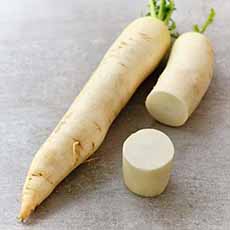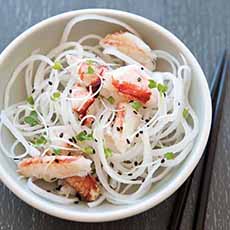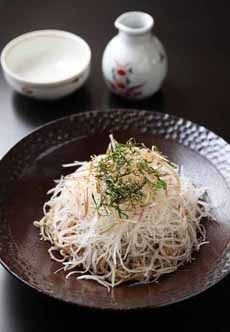TIP OF THE DAY: Daikon Radish Recipes – How To Use Daikon Radish
|
|
Daikon (DYE-kon) is a long white Asian radish (there is also a less common black-flesh variety), often found in Chinese, Japanese and Thai cuisines. If you’ve had sashimi at a Japanese restaurant, the fish is often set against a mound of grated daikon (which is meant to be eaten—it’s delicious and low in calories). A long, narrow vegetable, daikon ranges in length from 6 to 15 inches and can average 2 to 3 inches in diameter. The origin of the daikon radish can be traced back to ancient China, but the name derives from two Japanese words: dai (meaning large) and kon (meaning root). Daikon is crisp and juicy, with a sweet flavor. It lacks the acrid sting of some varieties of round red radishes that are prevalent in the U.S. Daikon is most often enjoyed raw in salads or as shredded into long, thin threads a garnish. It is cooked in stir-frys and other recipes (see below). Raw and pickled, daikon multitasks as a condiment. Daikon is low in calories: A half-cup has just 15 calories, plus 1 g fiber and 20% of your Daily Value of calcium. If there’s no daikon in your usual market, check out Asian food stores. Look for well-formed radishes: smooth, hard, and free of soft spots or sprouts. Refrigerate, unwashed in a plastic bag for up to 10 days. When you’re ready to cook it, scrub the daikon with a brush under cool running water. Peel before using, or grate with the skin on. Try these recipes from Melissas.com, purveyor of specialty produce: |
|
|
|
||


